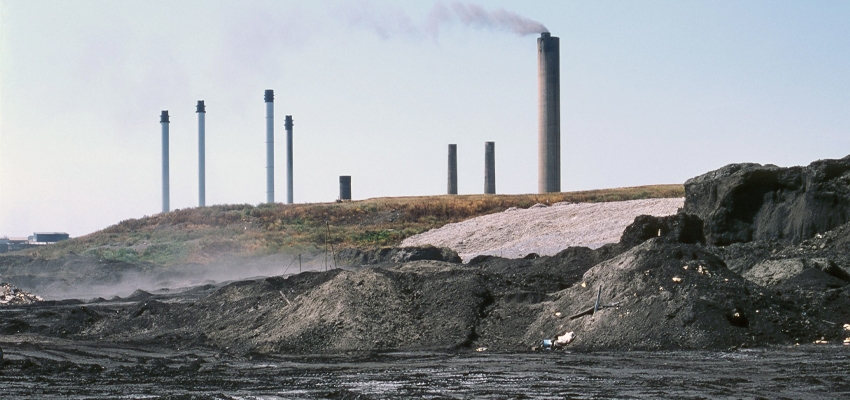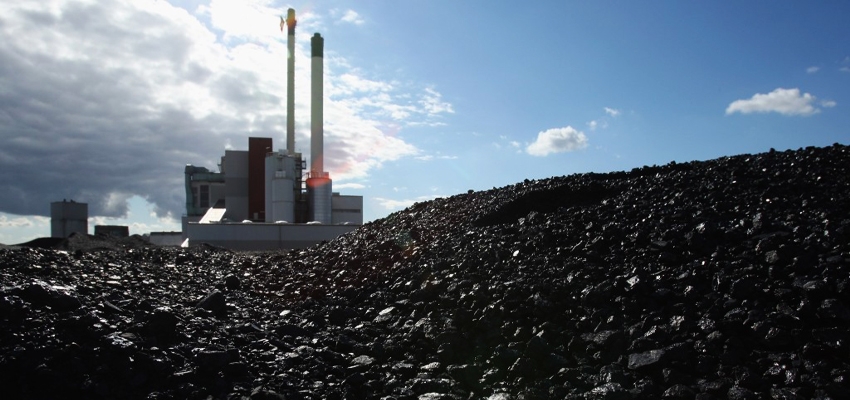The health dangers stemming from coal ash exposure have become more widely known following coal ash spills in Tennessee in 2008 and in North Carolina in 2014. That’s why it should be concerning to hear about the findings of a new study funded by the National Science Foundation and Susan Wind, a former Mooresville, N.C., resident whose daughter and others on the block where they used to live developed thyroid cancer.
In 21 sites downwind of Tennessee Valley Authority’s Bull Run Fossil Plant in Claxton, Tenn., and 20 sites downwind of Duke Energy’s Marshall Steam Station near Mooresville, N.C., tests consistently showed that most of the samples collected contained fly ash contamination – one of the byproducts of coal ash. Fly ash contains arsenic, selenium and other toxic elements, and even though the Duke University news release touting these findings mentions that “the concentrations of toxic elements did not exceed human health guidelines for metals occurrence in soil,” Wind says that alarm bells still should be ringing.
“This is just the beginning, because there is more coming out,” Wind says.
The sites in Mooresville where ash was detected, per reporting from the Charlotte Observer, included near Trump National Golf Club, the Queens Landing entertainment complex, Ramsey Creek Beach, Lake Norman High School, near Toucan’s Lakefront restaurant, and, on the western side of the lake, near the Westport community and Beatty’s Ford Park.
In Tennessee, coal ash was found at the Claxton Community Playground near the Bull Run plant and on several properties downwind of the plant. The highest concentration in the study came at the Claxton playground, with those samples showing significantly higher levels of fly ash than those in North Carolina.

Why coal ash is a problem
It is disappointing and upsetting to see the EPA seeking to allow coal ash fill sites to go that much more unchecked than previously, especially when a 2019 study from the Environmental Integrity Project found that 91 percent of U.S. coal-fired power plants that have monitoring data are shown to be contaminating groundwater “with unsafe levels of toxic pollutants.”
If there is groundwater contamination near these coal ash basins at power plants, imagine the potential harm coal-ash fill could have on your family’s health, should that fill ever become exposed or leach into drinking water sources.
Coal ash needs to be treated as the hazardous waste that it is, and it needs to be disposed of properly. It contains toxins such as arsenic that are known causes of cancer. While some coal ash is currently used in the making of concrete, a seemingly beneficial use where the coal ash is encapsulated and therefore presents less risk to the environment, what happens when that concrete breaks up or needs replacing? That presents the chance for coal ash to be introduced back into the environment and become a health hazard.
The EPA’s proposal and the continued use of coal by power companies to create electricity means that the coal ash problem isn’t going away anytime soon, and only will get bigger as power companies struggle to make a fast change to cleaner energy sources such as renewable energy. And we haven’t even discussed how the burning of fossil fuels contributes to greenhouse gas emissions linked to climate change.
The use of solar and wind power can mitigate the problems caused by coal ash. However, they still need to be encouraged and supported. Evans, the Earthjustice attorney, warned at the EPA hearing that, “This proposal is not only immoral and contrary to science, it is illegal. We will see you in court.”
Why Susan Wind is fighting to raise coal-ash awareness
The effort to raise awareness to the dangers of coal ash is very personal to Wind. Her 20-year-old daughter Taylor had surgery to remove her thyroid after she was diagnosed with thyroid cancer in 2017. Taylor needed a second surgery this past Monday after cancer was found again, this time in lymph nodes in her carotid artery, trachea and near her voice box. The Winds lived in the 28117 zip code, one of two zip codes in the area that has . Next steps in Taylor’s treatment will come after a six-week recovery period, and radiation does not appear to be an option because of the type of cancer involved.
“Until the state, which they never will do, can prove to everybody that all these people who got cancer, all these kids at the [Lake Norman High School], all these neighbors that I had, my daughter, until they can prove that coal ash is very safe for you to inhale or ingest, until they can prove it, I will spend the rest of my life making people aware,” Wind says.

While these utility plants have traps to capture coal ash emissions, this study shows that those safeguards don’t catch all pollutants. And despite the low concentrations of these metals in the soil, Duke University environmental quality professor Avner Vengosh says that doesn’t mean there’s zero risk.
“We need to understand how the presence of fly ash in soils near coal plants could affect the health of people who live there,” Vengosh said in a news release. “Even if coal plants in the United States are shutting down or replaced by natural gas, the environmental legacy of coal ash in these areas will remain for decades to come.”
The study utilized a suite of four new tests that together can detect the contamination with “unprecedented sensitivity” and show what proportion these tiny particles are appearing in the total soil. The peer-reviewed study was completed by Vengosh and five other scientists and published in Environmental Science & Technology.
Wind says there’s plenty of blame to spread around, from the EPA to the state and the utility companies. None of them want to admit there’s a problem, because doing so would affect utility company profits, property values and businesses.
“We have to push for more studies to show you that this coal ash is not safe,” Wind says. “And the more studies you get, the more evidence that we’re collecting. And we have to do that to prove that this is dangerous that people are living among this stuff.”
No matter what happens, PowerHome, an energy efficiency online shop, can help you reduce your carbon footprint when it installs high-quality solar panels at your home or business. Our solar panels can reduce your electric bill, and therefore reduce your dealings with the power company. That’s what makes solar such an intriguing supplement to grid energy.
(1).png)
(1).png)